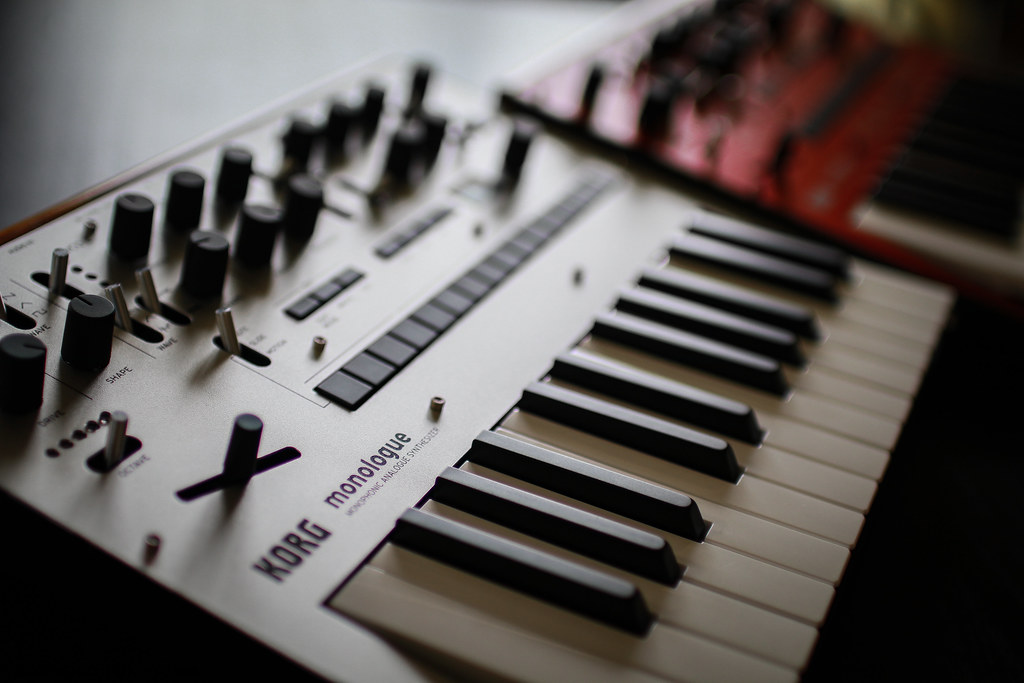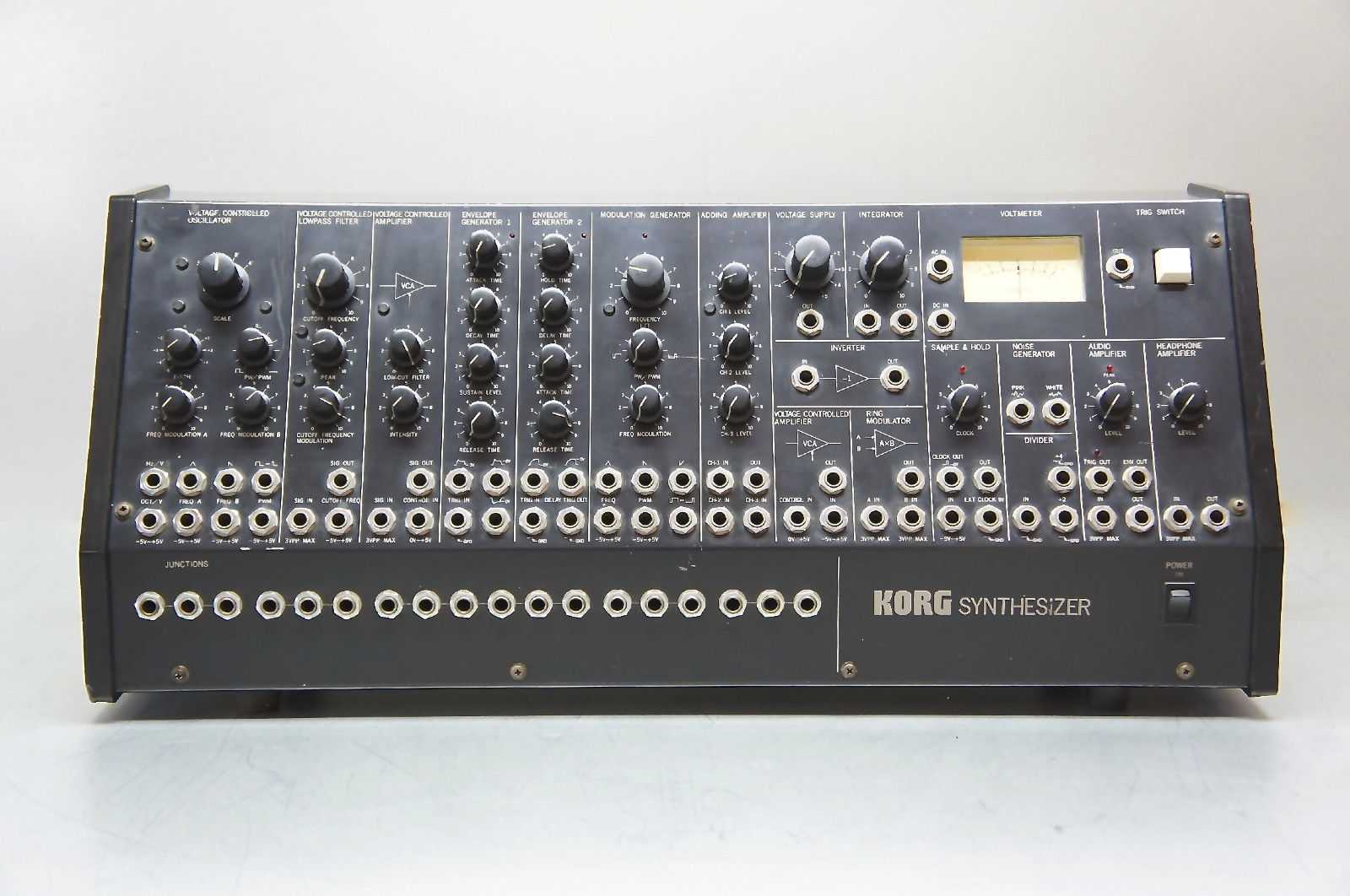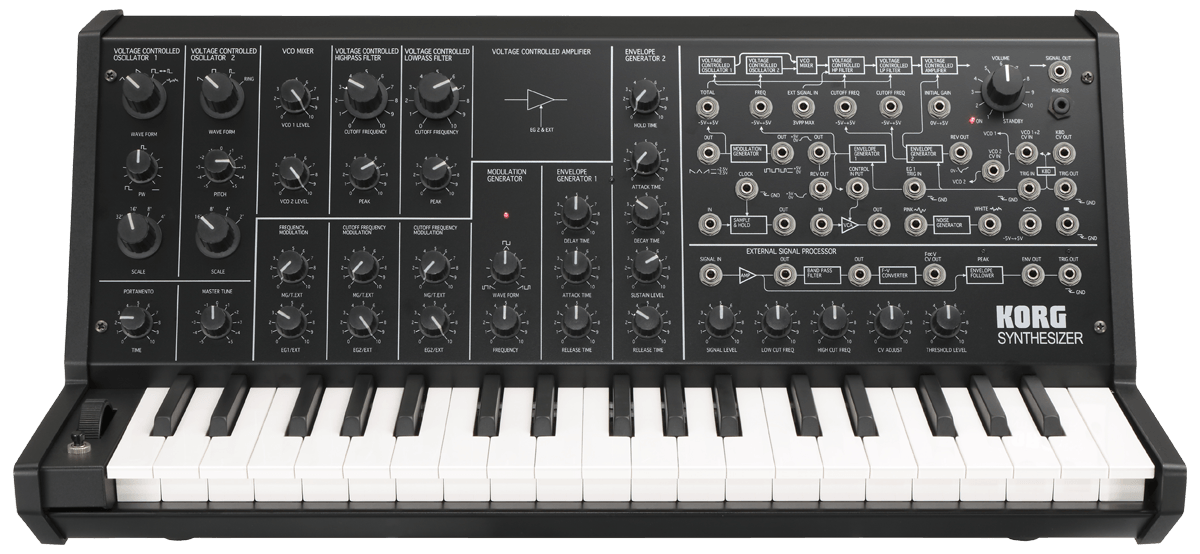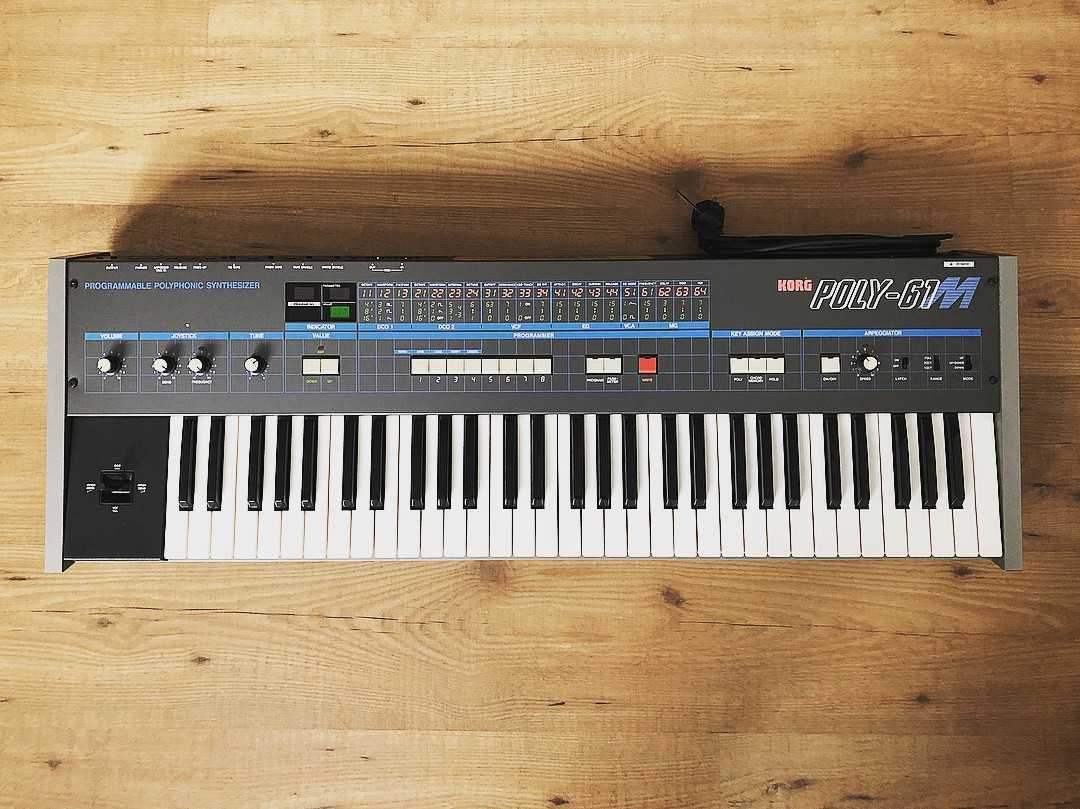
The Korg monologue is a 25-key, fully programmable monophonic analog synthesizer with a voice all its own. While sharing its sleek layout, knob-per-function workflow and high-quality construction with the best-selling minilogue, monologue is a truly unique new synth for all types of musicians; featuring new voicing and sound sculpting abilities – at an amazing price. The monologue’s completely new filter, modulation, drive, and LFO can generate powerful basses and sharp leads, creating awesome mono sounds that showcase its single-voice design. The step sequencer has also been dramatically expanded, allowing more intuitive and more complex editing. With a lineup that gives you a choice of five eye-catching colors, this compact instrument has a strong personality to match your own.
- Analog synthesizer with all-new synthesis structure optimized for amazing monophonic sounds and sequences
- Fully programmable, with 100 program memories (80 presets included)
- 16-step sequencer with extensive motion sequence technology to make your sound move
- Microtuning lets you freely create scales and alternate tonalities
- Oscilloscope function helps visualize the waveform in real time
- Battery-powered for portability
- Rugged and stylish with aluminum top panel, chassis-mounted pots, rubber-coated knobs, and real wood back panel
- MIDI, USB MIDI, and Audio Sync for all types of in-studio and live connectivity, including direct sync with minilogue, SQ1, volca, electribe, and more
- Five color variations that will shine on stage or in the studio
The monologue contains monophonic analog synthesizer circuitry that builds on the circuitry of the minilogue. But that doesn’t mean that the monologue is simply a one-voice model of the minilogue. It’s a monophonic beast with stunning power that comes from a redesigned envelope section, modulation routing, and a filter with powerful low-end punch.
The structure is 2VCO, 1VCF, 1EG, 1VCA, and 1LFO. In addition to the same distinctive circuits as on the minilogue (such as the wave shaping that shapes the overtones of the oscillator, and a sync/ring switch), the filter section uses a two-pole filter to deliver aggressive sound. Newly featured is a drive circuit that adds overtones and distortion to the sound, letting you generate fat basses and sharp lead sounds to your heart’s content. The LFO rate can be adjusted into an unprecedentedly ultra-high-speed range to generate crazy space-shattering sounds, or switched to one-shot mode to act, in a sense, as an additional envelope. The keyboard section features the acclaimed slim keybed of the minilogue and the MS-20 mini. To make monologue a synth that any musician can immediately pick up and play, the keyboard covers the E–E range of notes – just like a guitar or bas . The monologue goes beyond analog synths in its price range by adding 100 preset locations. Select a program for instant access to great sounds – – ranging from thick basses to deep subs to brilliant cutting leads and even percussive sequences. No need to have deep synthesis knowledge; just choose a sound and tweak – a workflow that is very familiar with musicians today. Built-in programs provide 80 preset sounds and sequences made by creative artists around the world including legendary electronic artist Aphex Twin, plus 20 user locations for saving custom sounds. The step sequencer of the monologue has been significantly enhanced to deliver musical, complex rhythms that are easy to capture, see, and edit. It supports both real-time recording with overdubbing capability as well as step recording that lets you record simply by pressing keys in the desired order, and you can also use the 16 physical buttons for quick editing or for improvisatory performance. The motion sequence function lets you record up to four knob movements to apply time-varying change to the sound, and allows you to record not only continuously changing values as on previous models, but also values with step-wise variation. Since it’s designed to let you create different sounds at each step, you can make unprecedented sequences, such as a sequence that generates a drum pattern from a single program. There’s also a key trigger function that lets you play back a sequence while you hold down a key, and even transpose it. Another new function is slide, which can be used to produce smooth bass lines by specifying portamento for each step. In addition, the Sound Librarian lets you manage your program data. Music has long been restrained to equal-temperament scales, and today, very few machines support microtuning. The monologue has a set of factory tunings and well as 12 user slots and is compatible with MIDI Tuning Standard 3Byte messages. The power of microtonal music is evident in the work of Aphex Twin, who has come onboard as advisor for the implementation and also to offer scales, sounds and sequences as part of the factory presets. All players are encouraged not just to use these Aphex Twin-created scales, but also to create their own scales and explore their own world of frequencies.
Manuals and software downloads



